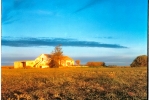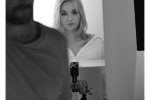











Architectural photography is the photographing of buildings and similar structures that are both aesthetically pleasing and accurate representations of their subjects. Architectural photographers, are usually skilled in the use of specialized techniques and equipment, this being tilt-shift lenses. These lenses help in correcting perspective and are not your standard lens. This is all done in prior to capturing the image, during the composition phase.
Some classic examples of this genre are images of building interiors and exteriors:
Used creatively, modern buildings with their reflective surfaces can create amazing images, more so if an older building is captured in that reflection. Photographing architecture can be quite fun, more often very interesting, especially if you have the background history behind the building or structure in question.
Architecture photography is typically created from either the exterior views of buildings, or in the interior of buildings. The techniques used in each of these types of photography are similar, but do have some difference and sometimes require different equipment.
Exterior architectural photography usually takes advantage of available daylight, or if performed at night, uses ambient light from adjacent street lights, landscape lights, exterior building lights, moonlight and even twilight present in the sky in all but the darkest situations.
In many cases, the landscaping surrounding a building is important to the overall composition of a photograph, and even necessary to communicate the aesthetic harmony of a building and its environment. An architectural photographer will often include flowers, trees, fountains or statues in the foreground of a composition, taking advantage of their ability to help lead the eye into the composition and to its main subject, the building.
Interior architectural photography can also be performed with ambient light transmitted through windows and skylights, as well as interior lighting fixtures. Frequently though, architectural photographers will use supplemental lighting to improve the illumination within a building. Either electronic flash “strobes” or incandescent “hot lights” can be used.
Click on the images below to view an enlarged single image.
All my images are available for purchase as prints. Digital images can be used under license agreement. Should you wish to purchase or license my images, please click here for more information, so I can assist you with your needs.
There are no upcoming events.
This is a demo store for testing purposes — no orders shall be fulfilled. Dismiss